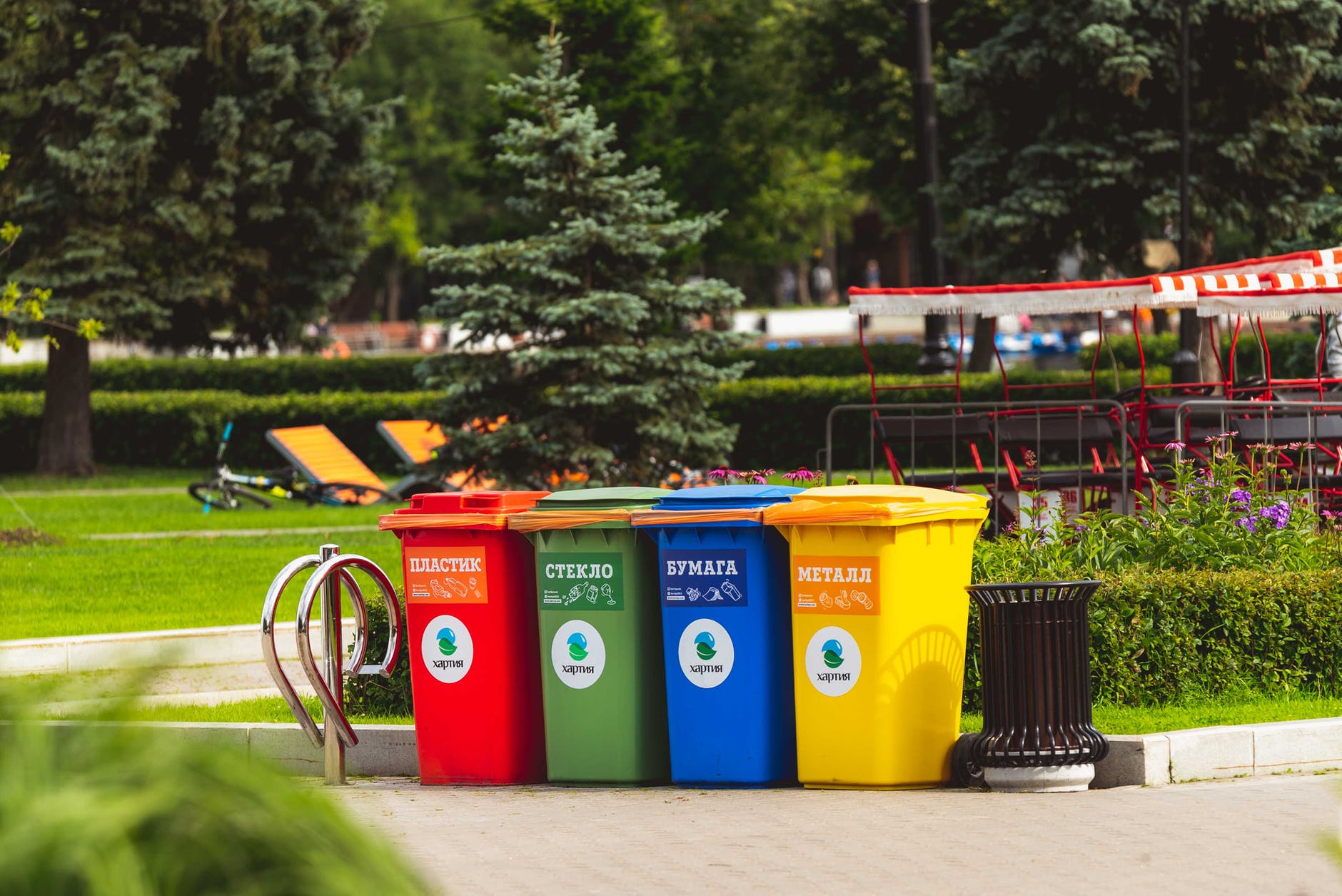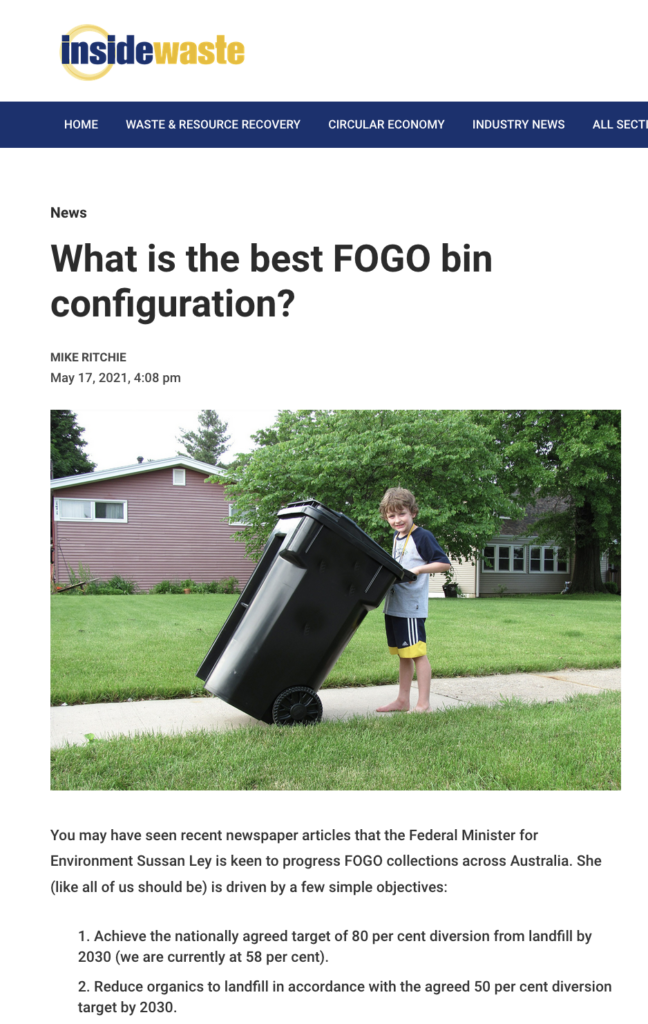What is the best FOGO bin configuration?
By: Mike Ritchie, MRA Consulting Group

You may have seen recent newspaper articles that the Federal Minister for Environment Sussan Ley is keen to progress FOGO collections across Australia. She (like all of us should be) is driven by a few simple objectives:
- Achieve the nationally agreed target of 80% diversion from landfill by 2030. (We are currently at 58%).
- Reduce organics to landfill in accordance with the agreed 50% diversion target by 2030.
- Reduce greenhouse gas emissions through practical projects.
- Create organic rich fertiliser for farmers and households.
- Create recycling jobs.
So I suggest to you that FOGO is going to happen and happen quickly now. All of Adelaide, Perth and Melbourne are going to FOGO. In NSW, the Waste and Sustainable Materials Strategy 2041 embraced FOGO for all.
A number of prominent QLD Councils are exploring costs. Similarly, a couple of regions in Tasmania.
I estimate that at least 50 Councils across Australia are currently modelling bin and cost options. Over 100 are implementing.
There are 578 Councils in Australia so I would say 20-25% of Councils have or are making FOGO decisions now.
To this end I wanted to provide a bit of clarity for Councils comparing options.
MRA has now modelled the separate collection of FOGO bins for around 100 Councils.
We are often asked “what is the best configuration of bins?”.
Firstly, use kitchen caddies and liners with any FOGO service. They are critical and all of the Councils below use them.
For the actual bins, we looked at the best available data on all bin configurations (which happens to be the NSW Local Government Survey 2020 report). It includes bin configurations, diversion statistics and tonnages to landfill.
Most importantly we used statistical analysis to compare options (rather than just averages which are highly misleading as you will see).
The key findings for 24 Councils with existing FOGO systems in NSW are given in the figure below with error bars (95% Confidence Limits).

All of these Councils have a FOGO bin collected weekly. The differences relate to how they treat their garbage service. There are 4 options:
- FOGO bin with a smaller garbage bin (say 120 or 140 litres) collected
- weekly or
- fortnightly.
- FOGO bin with a large garbage bin (usually 240 litres) collected
- weekly or
- fortnightly.
The analysis shows that, on the current available data, there is little difference in average performance and almost no statistically significant difference in FOGO capture rates depending on which garbage bin option Council chooses. There are differences in averages, but they are not statistically different.
The key findings of this analysis for FOGO capture rates include:
- On the averages only, a fortnightly garbage service delivers the best FOGO capture (35.5% and 39.8%). Compared to weekly garbage which delivers lower recovery.
- On the averages the best option is a 240L garbage bin collected fortnightly (39.8%).
- Smaller 140L garbage bins perform (statistically) no better than 240L bins. (The sample sizes are small for 140 litre garbage collected weekly and therefore it has enormous error bars).
- The only statistically significant result is that a 240L garbage bin collected fortnightly performs better than the same bin collected weekly.
- A smaller garbage bin collected fortnightly does not perform better than a larger bin collected fortnightly.
How should we interpret these results?
Well firstly most Councils in NSW have 240L garbage bins now. So, don’t rush to change them to smaller bins. It offers no discernible benefit but adds the significant capital cost of replacing all garbage bins.
If you already have smaller garbage bins, then stick with them. No need to change.
It may be counterintuitive but there is no statistical benefit in pushing a smaller garbage bin to a fortnightly collection service. (But it almost always annoys some residents).
I always adopt the KISS[1] principle. So, doing the least amount of change to achieve the optimal result should be the goal.
So, leave the big bins in place if you have them and eventually push the garbage bin to a fortnightly service if you can. That will require education and time. But it will deliver the best result.
But having said that there are plenty of Councils showing great results with different configurations.
The main goal here is to get organics out of landfill. You will achieve most of the benefits with ANY of the above configurations.
Overall, it is not so much the bin configuration that matters, as much as the decision to introduce a FOGO service at all.
[1] Keep It Simple Stupid.
If you would like further information, please contact us at info@mraconsulting.com.au
This article has been published by the following media outlets:




